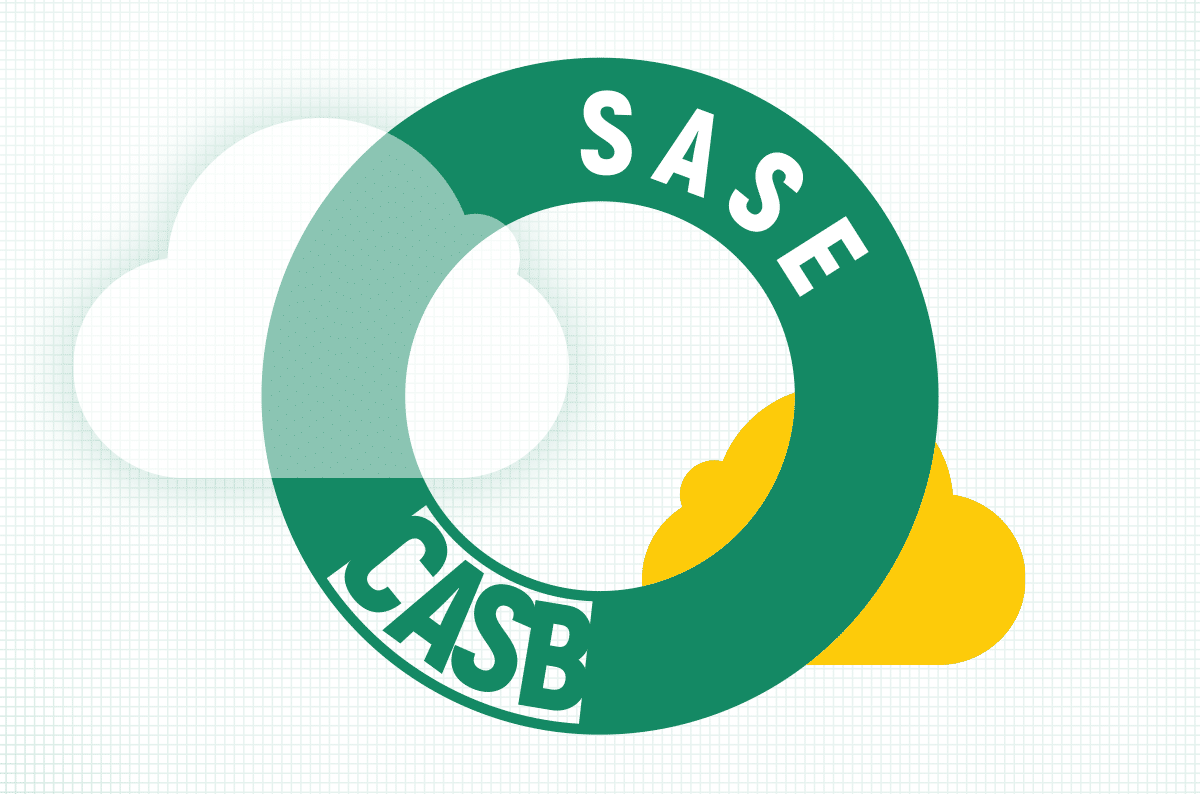|
Listen to post:
Getting your Trinity Audio player ready...
|
Cloud adoption has exploded in recent years. Nearly all companies are using cloud solutions, and the vast majority having deployments spanning the platforms of multiple cloud service providers.
These complex cloud infrastructures can create significant usability and security challenges for an organization. If security settings are misconfigured, an organization’s cloud infrastructure, services and applications could be potentially vulnerable to exploitation.
Cloud security solutions are essential to managing the security risks associated with cloud adoption. Two of the most important security capabilities for the cloud are a cloud access security broker (CASB) and secure access service edge (SASE).
What is a Cloud Access Security Broker?
CASBs enforce an organization’s enterprise security policies when using cloud applications and service. These solutions can be deployed anywhere within an organization’s infrastructure, including on-prem data centers, a cloud service provider, or as part of a SASE deployment.
CASB is essential to the safe and secure use of cloud applications and services because they enable an organization to ensure that its enterprise security policies are enforced in the cloud. This capability not only enables the organization to more effectively protect applications in the cloud, but it’s also essential to ensuring that the organization’s cloud environment maintains compliance with applicable regulatory requirements.
CASB Functions and Features
In order to ensure enforcement of enterprise security policies in the cloud, CASB solutions must provide various features and capabilities, such as:
- Visibility: Visibility is one of the core capabilities that any effective CASB solution should provide. CASB’s role as a policy enforcement engine means that it needs to provide administrators with visibility into their cloud environments to define granular security policies, and ensure they are effectively enforced. Also, CASB can help to detect unauthorized or misuse of cloud resources that fall outside of enterprise security policy and the management of the IT and security teams.
- Access Controls: CASB solutions provide organizations with the ability to govern the usage of their cloud-based environments and services. This includes tailoring access controls to an employee’s role and needs as well as defining rules governing access, basing access decisions on the employee’s identity, location or other factors.
- Threat Protection: CASB solutions perform behavioral analysis for cloud applications, identifying unusual activities that might indicate a malware infection or other potential risks. This behavioral monitoring enables security administrators to investigate and remediate these issues.
- Compliance Enforcement: Many organizations are subject to common data protection regulations and standards. CASB will enforce enterprise security policies and regulatory compliance policies. A CASB solution should streamline the process of implementing required security controls, perform logging, and compliance reporting. Such reports can inform internal stakeholders and regulatory authorities of the organization’s compliance posture.
How CASB works with SASE
CASB is a key element of SASE’s unified security stack, providing visibility, security, and control over cloud applications. SASE’s visibility into all traffic flows provides CASB with the access and control needed to fulfill its role. SASE provides secure, optimized access to enterprise and cloud applications and resources.
In the end, both CASB and SASE are crucial to an organization’s enterprise and cloud security posture. SASE provides the secure, high-performance network platform for the modern enterprise, while CASB ensures the safe and secure use of cloud applications and resources. Together they strengthen an organization’s overall security posture.
CASB Functions for Cloud Service Providers (CSPs)
CASB is a crucial component of a cloud security strategy. Without the visibility and policy enforcement it provides, an organization can’t effectively manage, secure, or maintain regulatory compliance in their cloud deployments. For this reason, some organizations may purchase CASB functionality as a standalone capability from their CSP.
For organizations whose cloud environment is solely within one cloud service provider, this may offer a workable solution. However, companies with multi-cloud environments may find that relying on CSP-provided CASB solutions creates visibility and management siloes, and increases the complexity of enforcing consistent security policies and access controls across an organization’s entire IT infrastructure.
CASB, SASE, and Cato Networks
Cato SASE Cloud includes advanced CASB functionality as part of its converged security software stack. Companies can monitor the use of all cloud applications, enforce enterprise security policies and access controls, assess risk, and ensure regulatory compliance. Cato’s CASB functionality also benefits from built-in advanced threat protection tools that provide an extra layer of defense against potential cyber threats. The Cato SASE Cloud is uniquely architected to secure multi-cloud deployments, making it easy for organization’s to maintain a safe and secure cloud security posture.
Cato SASE Cloud — Cato’s pioneering SASE solution converges networking and network security into a single cloud-native platform. Traffic flows across our global private backbone, ensuring reliable and predictable performance for an organization’s enterprise and cloud environments. The Cato SASE Cloud is the Digital Transformation Platform of the modern digital enterprise.










